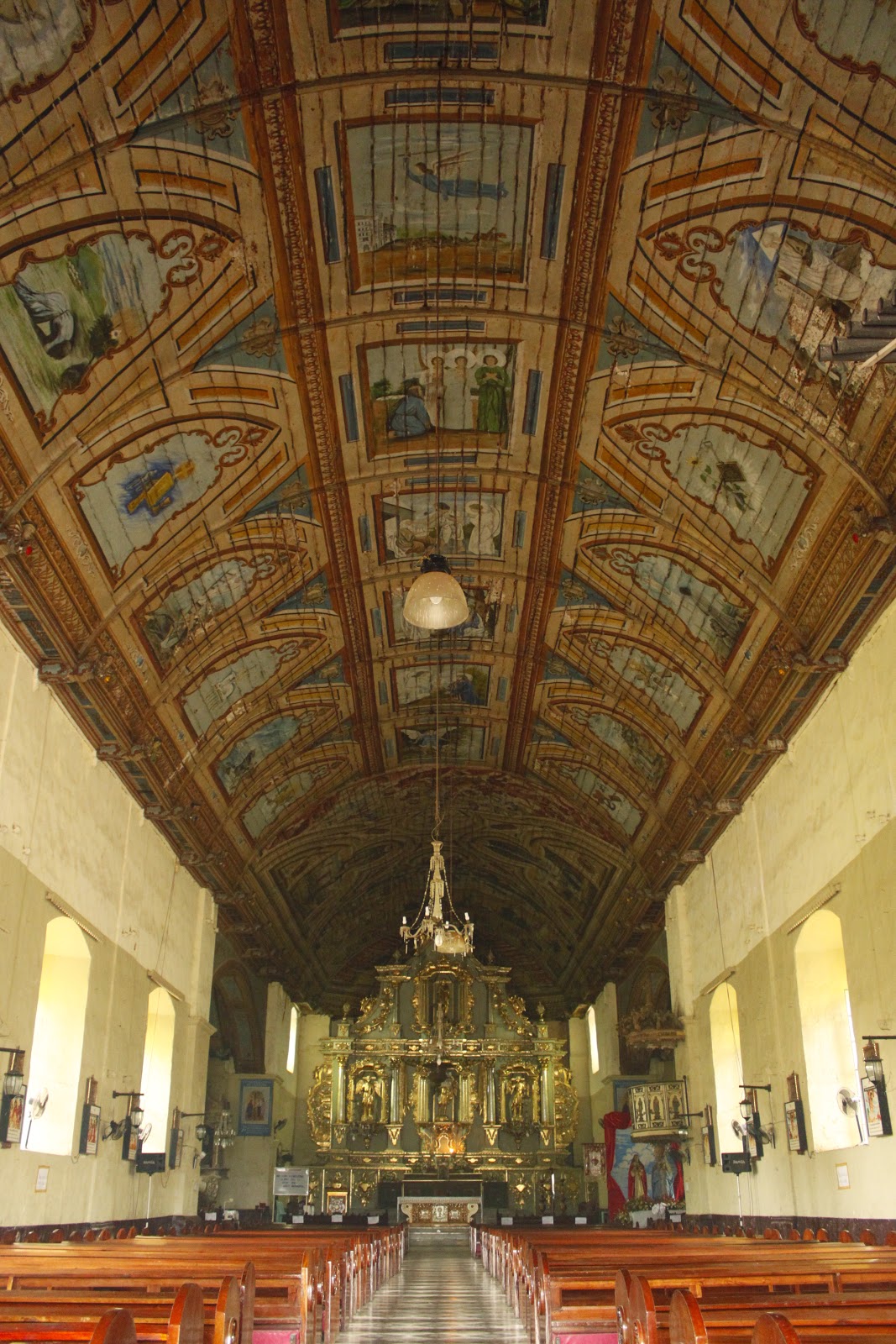San Miguel Arcangel Parish Church is a Roman Catholic church in Argao, Cebu, Philippines. The municipality of Argao was established as a parish in 1703 under the Augustinian order. To serve the parochial needs of its people, a stone church was constructed in 1734 and was completed in 1788. The church was dedicated to Saint Michael, the Archangel.
The coral stone church is a two-level structure with an imposing, highly ornate pediment and double-pilaster columns on its facade. Together with its convent, the church was fortified to also serve as refuge during Moro raids in the 18th and 19th century. The facade contains articulate carvings depicting the patron saint displayed on its niche, flanked by oversized urn-like finials standing on rectangular bases at each corner of the pediment.
The church follows the usual cruciform plan. The interior contains a single aisle with a double nave. Five altars adorn its sanctuary and transept areas, with the main altar containing 3 life-size statues of the three archangels: St. Michael, St. Raphael and St. Gabriel. The vaulted ceiling is made of wooden panels arranged longitudinally with details of seraphs protruding as corbels. Paintings depicting the life of the angels and archangels, plus several Biblical passages, adorn the ceiling surface—half of which were painted by the renowned master Cebuano painter Raymundo Francia, and the other half by an unknown Boholano artist.
The convent at the right side of the church served as a seminary during the early part of the 19th century. Today the convent serves as a museum for tourists. At the left of the church structure is the site of the former town cemetery, which now serve as the church complex's gardens.
The bell tower has three levels supporting a single large bell on the second level, with 8 smaller bells on the third. The base of the belfry supports a square plan, while the second and third bases follow an octagonal plan, topped by a domed roof. The bell tower is connected to the church by a single-level baptistry.
The convent at the right side of the church served as a seminary during the early part of the 19th century. Today the convent serves as a museum for tourists. At the left of the church structure is the site of the former town cemetery, which now serve as the church complex's gardens.
 |
| Argao Church Plaza |
The plaza is bound by a short coral stone wall, where processions start and end during religious and festive rites. The plaza contains three statues mounted on pedestals with light posts. The plaza used to have clay tiles on its grounds, plus a big wooden evangelization cross mounted at the center. Adorning the coral stone walls are the 14 high reliefs of the Via Crucis, depicted using symbolisms on each station, which is very unique and highly unusual in the country.
There are two watchtowers built within the church complex: one at the front of the church and the other at the back. The front watchtower served as the first line of defense during Moro raids, and is integrated within the complex's fortified walls. The one at the back, which is already a ruin, has a circular plan, and was built using river stones and utilizing riprap construction.
 |
| Altar of Argao Church |
_(14966714386).jpg) |
| Ceiling Paintings of San Miguel Arcangel Parish Church, Argao, Cebu (100 dpi) |
 |
| Interior of Argao Church |
 |
| Interior of Argao Church |
 |
| Ceiling Paintings of San Miguel Arcangel Parish Church, Argao, Cebu (100 dpi) |
 |
| One of the Via Crucis high relieves inside the church plaza |
Beside the front entrance of the fortified church complex is a single level, coral-stone structure built together with the church. It was used as a leprosarium during the Spanish period and as an autopsy area for those who died tragically during the American era. The facade's pediment features very ornate carvings of angels and human figures, with skull and bone details that explain the function of the structure.






No comments:
Post a Comment